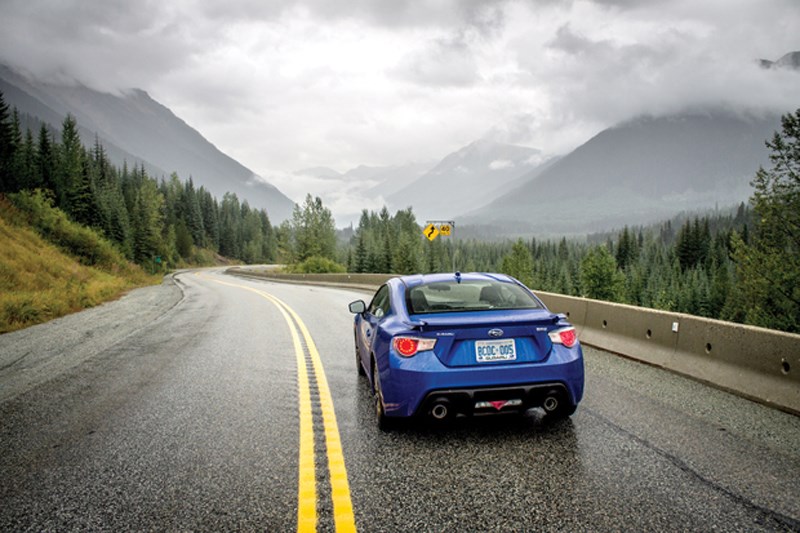This year, Subaru celebrates 50 years of the horizontally opposed engine.
Pop the hood on any Subie and you’ll find one of these shiny metal pancakes mounted low and wide. The four-cylinder variants can come with turbocharging or naturally aspirated, and there’s even a flat-six that’ll probably be around for a few more years.
The boxer engine is so named because the two banks of pistons are situated directly across from one another, making the power strokes go back and forth like a couple of pugilists duking it out. The advantages are a low centre of gravity, and fewer vibrations.
The disadvantages to the boxer engine configuration include occasionally wonky head gaskets (with two to worry about), and potential problems with oil consumption. It’s also a pain to perform maintenance like spark plug changes because the engine is so much wider than a normal inline four.
Subaru, however, has stuck with the boxer for half a century now, and it defines the brand. Ah, I see you there in the back, raising your hand to protest that Subaru’s defining characteristic is its excellent all-wheel drive, available everywhere except in the BRZ sports car. Fair enough: but if it were not for the boxer engine, there would be no all-wheel-drive Subarus. Let’s hit the tape for the history lesson.
Back in 1966, Fuji Heavy Industries decided to build what was their first real car. They’d already had some success with the Subaru 360, a homely little pinball of a thing that looked a bit like a misshapen VW Beetle. This time, however, they wanted to build a proper family car for Japan and the export market.
After some back and forth during development over engine size and power, they finally released a total monster, the Subaru 1000. As the name might leave you to believe, it had 1,000 horsepower. Well, no. It didn’t. It had more like 55 h.p. on a good day with low ambient temperatures and a following wind.
It did, however, have a unique innovation: a 1,000 cc flat-four engine. There had been many a flat-four before this from companies like Citroen, Porsche, and even Toyota, but the Subaru version allowed for a further development not seen before in a mass-produced Japanese vehicle. It was front-wheel drive.
Considering how much fun WRX drivers poke at sporty front-wheel-drive cars like the Honda Civic Si, it’s kinda funny that Subaru roots stretch back to a front-wheel-drive econobox. The first Subaru family sedan, however, came with something that’d be familiar to any Subaru owner – it was extremely good in the snow.
With skinny 1960s-era tires, plenty of weight over the nose, and front-wheel drive, the 1000 could pull itself along where rear-drive Datsuns and Toyotas just spun their tires. Additionally, cramming all the drive gear up front made the cabin relatively roomy. People loved them.
As chance would have it, the Tohoku power company noticed how popular the 1000 was, and approached their local Subaru dealership in Miyagi prefecture. Their Land Cruisers and Mitsubishi off-roaders were canvas-topped and brutally cold in the winter, and they often needed to get out and service equipment in remote areas. Could Subaru help?
Cars being a lot simpler in those days, Subaru Miyagi came up with the best dealer-installed accessory ever. Taking the drivetrain from a Datsun 510 wagon (still called Nissans in Japan), they grafted over rear-drive bits to make an all-wheel-drive wagon. It had slightly higher ride height than the normal 1000, and all-wheel drive. Hey presto: the first Subaru Outback was born.
Just eight of the custom wagons were made, and there the story might have ended. Somebody at Subaru Miyagi, however, was so enamoured of their creation that they decided to drive it over to Subaru headquarters. The executives took one look and decided to put it into production.
The boxer grew in power and displacement, adopting turbocharging in the 1980s, and eventually becoming a force in motorsport. It also spun off into a six-cylinder variant that provided turbine-like smoothness. It’s a pity the flat-six will probably fade away in favour of the emissions-friendlier four-cylinder turbo at some point, but then again the flat-four is where Subaru came from.
It created a huge, loyal fanbase in the rally-crazy community and powered many a family home in their first new Forester. We had wedge-shaped XTs and boxy Loyales. We had gravel-spewing STIs and the strangeness of the SVX. All were powered by the little horizontally opposed engine that could.
Matter of fact, I’m hurriedly writing this from the passenger’s seat of a Subaru Forester as it hurtles along a gravel road in Alberta while my editor sits impatiently in front of a blank page. Sorry Boss, I forgot about my deadline. (Editor’s note: What? Pull a stunt like this again and you can bloody well stay in Alberta!)
So happy 50th anniversary, Subaru boxer engine. You were never a normal choice for a car, but you helped build a brand that’s become a West Coast favourite. Flapjacks for everyone.



